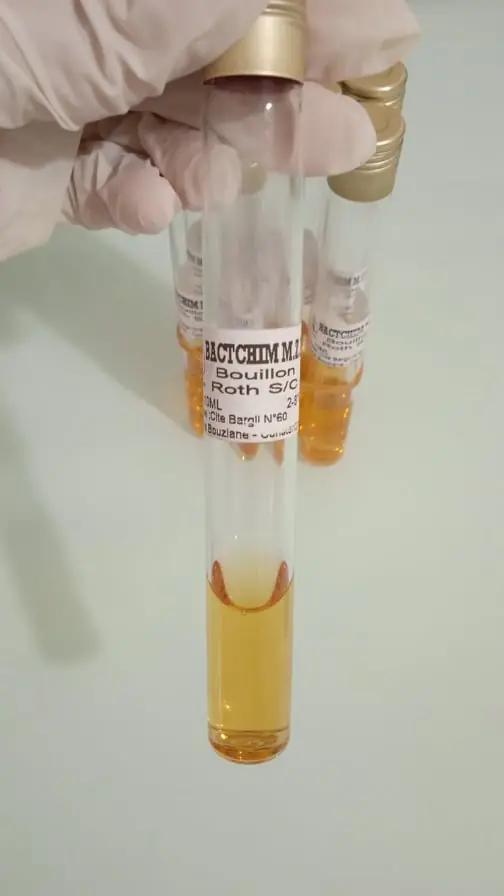Content :
Azide Dextrose Broth: Principles, Preparation, and Application
◉ Overview
Azide Dextrose Broth, Rothe's broth, is a selective medium used for the quantification of enterococci in water, food, and other materials suspected of being contaminated with sewage.
The search is carried out in 2 steps::
- A presumptive test in Azide Dextrose Broth
- Transfer positive cultures to confirmation medium (Ex: Litsky, Bromocresol Purple Azide Broth, Bile Esculin Azide Agar, etc.)
The presence of enterococci is used as an indicator of fecal contamination. Enterococci are better indicators than Escherichia coli of wastewater pollution in chlorinated waters because they have greater resistance to chlorine.

Azide Dextrose Broth - Rothe Broth
◉ Preparation / composition
Suspend the components, dehydrated powder, in water (34.7g in 1000 ml of purified/distilled water). Bring the medium to a boil with constant stirring. DO NOT OVERHEAT.
Distribute in test tubes and sterilize in an autoclave at 121°C for 15 minutes./p>
Composition of Azide Dextrose Broth |
|||
|---|---|---|---|
| Ingredients | gram/liter | ||
| Peptones | 20g | ||
| Glucose | 5g | ||
| Sodium chloride | 5g | ||
| Sodium Azide | 0,2g | ||
| Buffers | 5,4g | ||
◈ This product has low toxicity, gloves, mask and eye protection should be worn when handling the powder.
◉ Principle of Rothe brothe
A mixture of peptone and glucose in the medium makes dextrose azide broth highly nutritious and sodium chloride maintains osmotic balance.
Selectivity against Gram-negative organisms is provided by sodium azide.
The phosphate buffer system controls the pH.
◉ Utilization
Inoculate 10 ml of medium with 1 ml of the sample to be tested. Inoculate 3 other tubes with 0.1 ml, 0.01 ml and 0.001 ml of sample respectively. Incubate all tubes at 37°C and examine turbidity after 24 and 48 hours.
Note: When large volumes of water samples are to be examined, a dual strength medium is used. Turbidity in the tubes indicates the presence of enterococci, however, it should be confirmed by inoculation in EVA broth (ethyl violet azide, litsky) and biochemical tests.
◉ Interpretation
◈ Incubate all tubes for 24 and 48 hours at 37°C. A positive culture causes cloudiness in the tubes. These will be subject to confirmation.
| Bacteria | Growth |
|---|---|
| Enterococcus faecalis, Enterococcus hirae | Troubled growth |
| Escherichia coli | inhibited |
| Staphylococcus aureus | inhibited |
| Pseudomonas aeruginosa | inhibited |
Sources:
- W L MALLMANN, E B SELIGMANN Jr - A comparative study of media for the detection of streptococci in water and sewage
- Handbook of Culture Media for Food Microbiology, J.E.L. Corry et al : Hektoen Enteric (HE) agar 2003
- ASM : Hektoen Enteric Agar Protocol
- Color Atlas of Medical Bacteriology
- Merck Microbiology Manual 12th Edition - Azide Dextrose Broth
- Thermo Scientific™ - Bouillon de dextrose azide (déshydraté)
- Indicia - BOUILLON de ROTHE
- Biolab - AZIDE DEXTROSE BROTH, ROTHE
- VWR Chemicals - AZIDE DEXTROSE BROTH
- HiMedia Laboratories - AZIDE DEXTROSE BROTH